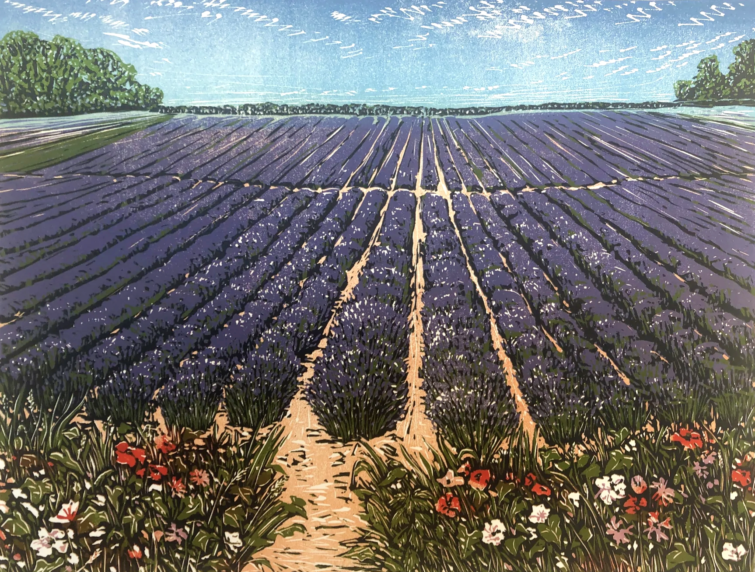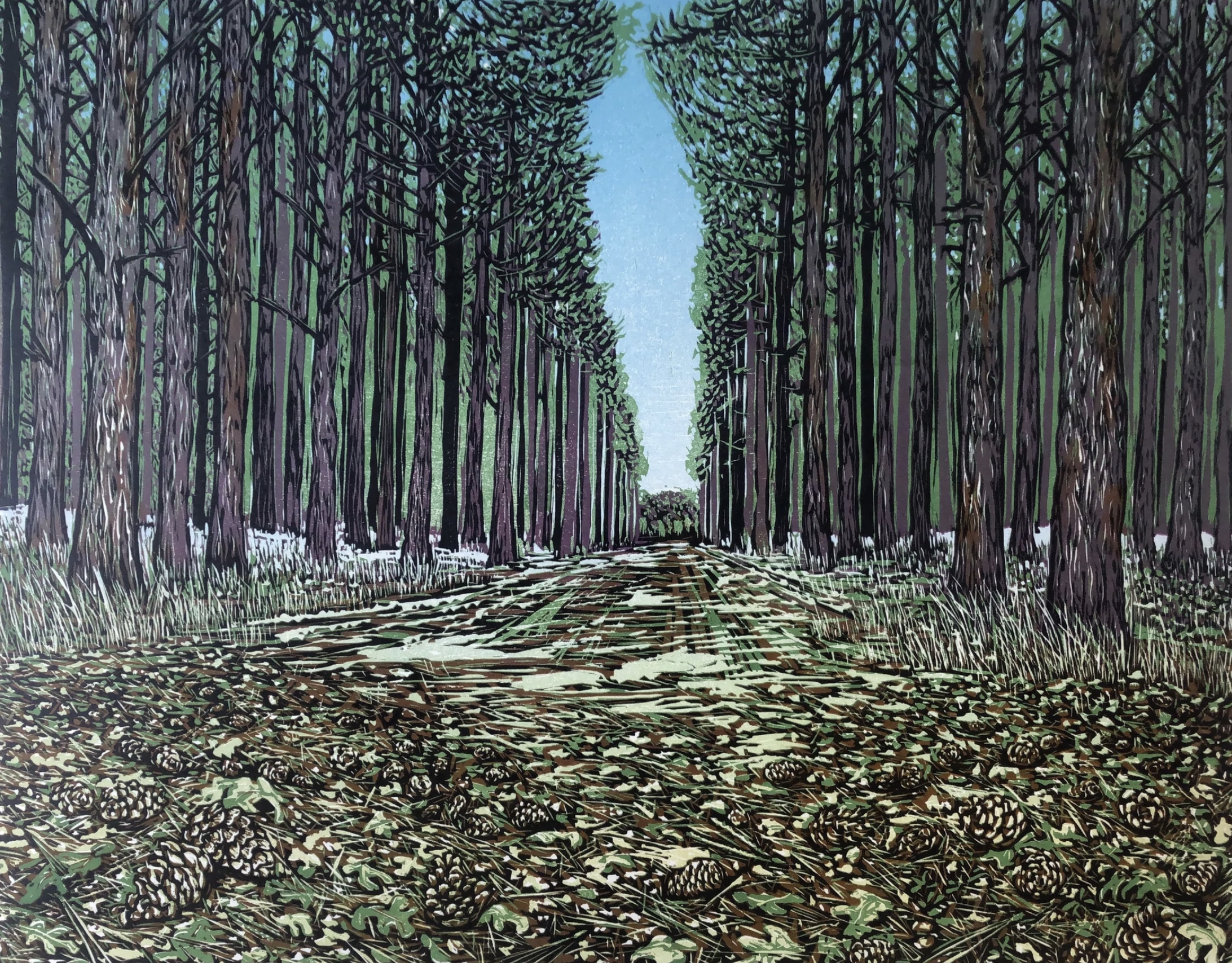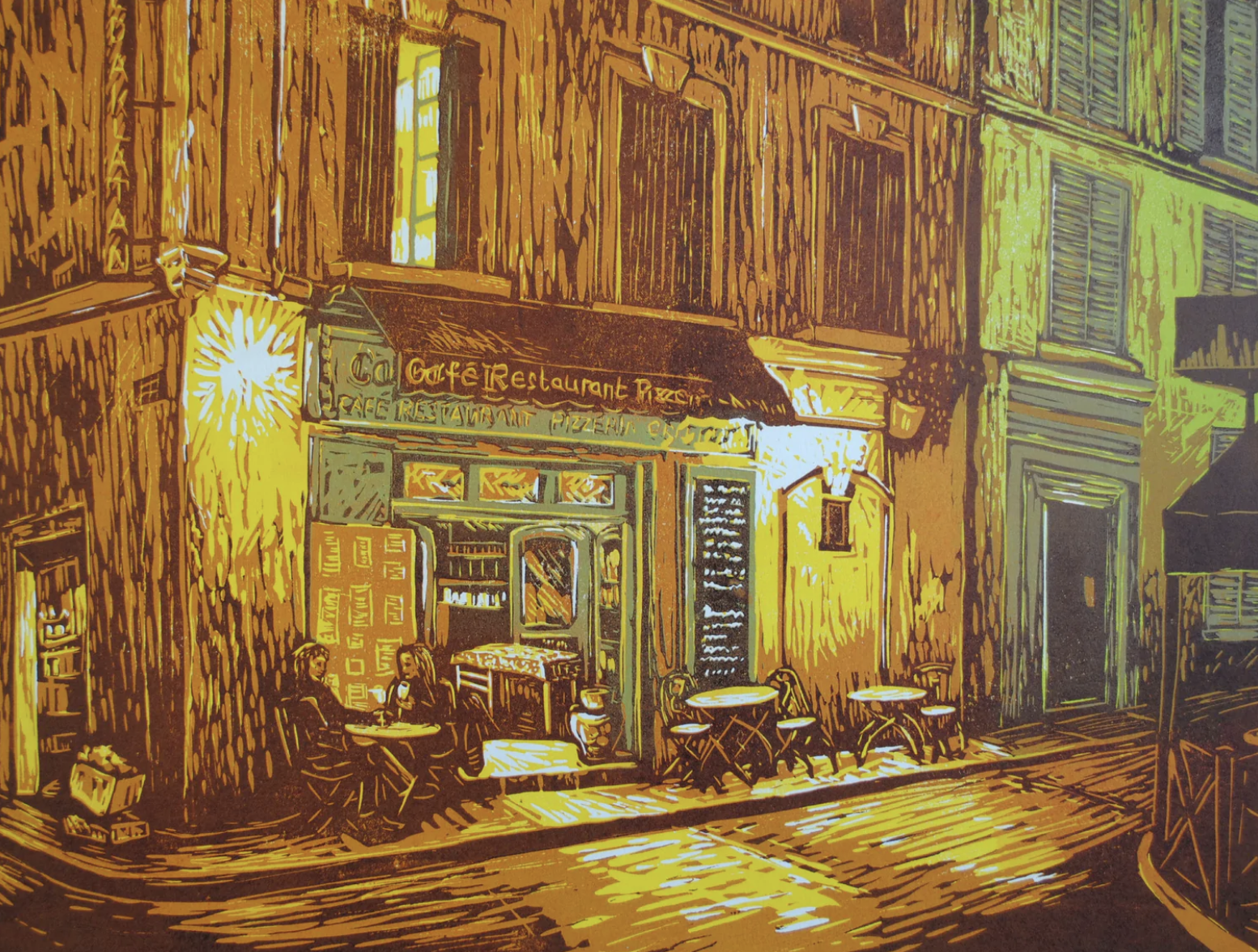Louise Stebbing’s retrospective exhibition is currently on display at the Alison Richard Building. The exhibition is open to the public from 9:00 – 17:00 on weekdays and runs until 16 September 2022.
Where to start with this show? …
Well, it’s good. It’s really good I think, and if you’re reading this, I want to encourage you to see it. It won’t disappoint and it will surprise. I left my first visit with a spring in my step. And left my second with a conviction that my early enthusiasm wasn’t a fluke. It really is good.
But before going on it’s worth declaring some things: I have tended to rank printing low in the hierarchy of mediums. I have, to my shame, assumed that it’s a practice that artists turn to as a side hustle, an option to exploit if they need some extra money (Goya, Hogarth, Hirst, and everyone else). And if that wasn’t the motivation, then I have assumed that artists who practised it exclusively were likely so burdened by, or in thrall to the minutiae of technology and technique that nothing good could come from it.
If this show achieves anything it is to blow those prejudices out of the water.

The exhibition, over 4 floors at the ARB, plots 4 decades of work by Louise Stebbing. Each floor covers a decade, and it is clear, as you wander amongst recent prints of trees, fields and skies on the ground floor, that those decades have not been wasted. That the sensibility and intelligence glimpsed in the earlier work have been enriched by experience and time.
Interests recur on each floor, studies of flowers, a persistence of skies and clouds, Norfolk’s flatness, the ground, twisting branches. These resolve into views, but the packaging of sensation into a view, which is so often deadening, doesn’t dilute these. They retain a freshness and a playfulness that I found exhilarating.
And this is where the technology plays its part. Stebbing’s engagement, and obvious joy, in the medium and its possibilities, lift the images and make them games in which we participate (rather than, as so often happens, something which we dutifully acknowledge). Skies are buffeted by clouds that stream chunkily across them. Grounds are littered with rough scorings that resolve into branches or pinecones. Frequencies overlay into dense patterns that make sense without collapsing into fraught description.
This is no worthy exercise in eyeballing nature. The images are transformed by a confidence in a medium Stebbing clearly loves. She has had fun over 40 years, and this is made manifest to us as we see what clouds can be, or trees or flowers as they are pressed through her joyful marks, and we feel her mind at work.
But this is not to say that the work is innocent or unaware of the traditions of art, because it’s busting with echoes that come from art and artists, I imagine she has liked, or at least seen and absorbed. I was reminded of Kiefer of all people when looking at her logs, and Hockney. At other times I thought I saw the influence of Samuel Palmer and Paul Nash and Ravilious. I can’t know whether these connections were sought for, but they are there and they lift the work from simple expression and deposit it into a conversation with a history in which we are all participants in one way or another.

But with all these echoes ringing in my head, it would be stupid not to acknowledge the big one: Van Gogh. I’ve not seen much work that refers to him that isn’t ironic or dismissive. Or else collapses into apery. But there seem to be some very direct quotes from Van Gogh in the show (notably in some prints of French cafes on corners at night) and they are none of the above. They pick up images that must be their source and refresh them. They may not be the best work in the exhibition, but they linger in the mind, if only because they reminded me that voice – the distinctive inflection of an artist – is not the same as idea, and technology doesn’t always muffle honesty.
There are some stand-out pieces. For me, the ‘Sunset over Outwell’ stands out as a moment when all the play with marks and colour and technique resolves in an image that is both brooding and exciting. And on the ground floor, there is a lilac field that is punctured by regular but not rigid cream paths that just keeps floating into my mind. At the risk of ruining its intrigue and diminishing its achievement, I think it’s beautiful.

And then there is ‘Bubbles under the Angel’. It is not beautiful like the lilac field or brooding like ‘Sunset over Outwell’. In fact, it is different in theme and structure to all the other pieces in the show, but its differences serve to re-enforce something that is characteristic of the exhibition as a whole: the sense of an artist who gives themselves the licence to play and has the intelligence to do so well. And, despite the ubiquitous talk of ‘play’ in art circles, I’m not at all sure that this is a common characteristic. It is perhaps why I found the exhibition so refreshing, because I had a strong sense while wandering through it that Stebbing was doing what she wanted. That for all her awareness of tradition, her submission to process and technique and her consciousness of currents in art, she has allowed her own sensibilities to flourish in a medium she loves. This is no small thing, and it’s what makes the show well worth seeing. Go.
- Written by John Clark, a Cambridge-based artist.
- Find out more about Louise Stebbing’s work.
- Join a tour of the exhibition with Louise Stebbing on 9 September 2022.

